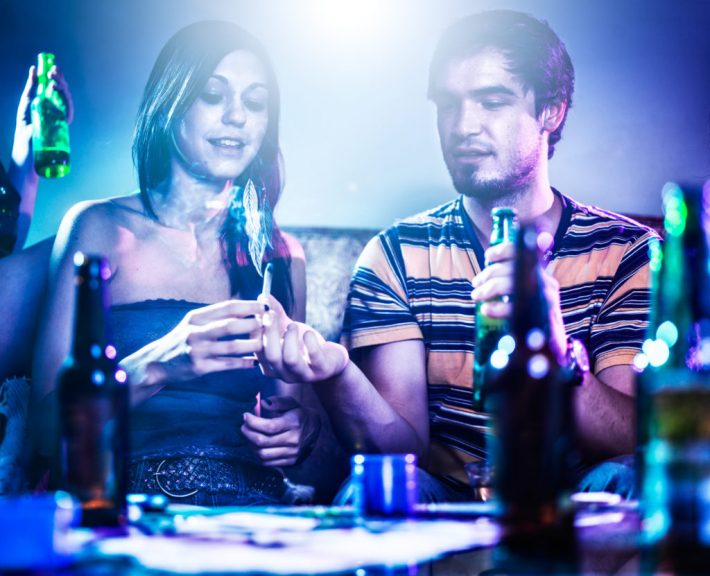Young people use alcohol and drugs while hanging out with peers

Most prior studies on adolescent substance focus on the individual but not on the setting. For example, adolescents who spend more time with peers are known to be more likely to use alcohol and drugs. It is typically assumed but not verified that alcohol and drugs use actually takes place during the time spent with peers. The present study focused on when, where and with whom adolescents use alcohol and drugs. Do they drink alcohol or use drugs at home, in bars and other public places, or outdoors? In the presence of parents or other adults, with peers, or alone? And in the context of which activities do they drink and use drugs?
Theory of deviance
The use of alcohol and drugs is quite common among adolescents, but it is seen as problematic and not generally accepted by their parents, teachers and other supervisors, nor by the law. Adolescent substance use is thus a form of deviant behavior. The routine activity theory of deviant behavior predicts that deviant behavior is facilitated by settings characterized by unstructured activity, the presence of peers and the absence of authority figures. Unstructured activities are activities that carry no agenda for how time is spent (e.g. hanging around, chatting), and authority figures are parents, teachers and other adults who are held responsible for the behavior of the adolescents, and who generally disprove of substance use by their children and pupils, and sanction it. The presence of peers might stimulate substance use because they provide access to these substances, because they approve substance use, and because substance use is likely more enjoyed when shared with others.
Hour-by-hour measures of activity and substance use
To further our knowledge of the settings in which adolescents use alcohol and drugs, the authors applied a dedicated time use instrument that helps to systematically record how adolescents allocate their time to different activities. During a one-hour personal interview, detailed hour-to-hour information about all activities performed during four recent days was collected among 868 adolescents aged 11-18 years.
Findings
In line with the theory, the findings demonstrate that while involved in unstructured activities, in the presence of peers, and the absence of parents and other adult supervisor, adolescent are more likely to use consume alcohol and drugs. In relative terms, unstructured activity is most important. Peer presence and adult absence are somewhat less influential. The findings also suggest that the effects accumulate, but do depend on each other: the presence of each factor facilitates substance use, even if the other factors are absent. For example, the presence of peers makes adolescent more likely to drink, even in structured activities or in the presence of adults. Involvement in unstructured activity and the presence of peers are related more strongly to alcohol use than to use of other drugs, whereas the absence of adult supervision is more strongly related to other drug use than to alcohol use.
Practical implications
The use of alcohol and drugs by adolescents is associated with negative physical, social, and psychological consequences, and an early start of substance use predicts substance use problems in adulthood. Prior research on the same data had already shown that alcohol use itself also functions as a situation risk factor for involvement in crime: when intoxicated, adolescents were more likely to commit assaults, thefts and vandalism (Bernasco et al., 2013). The present findings may help parents, teachers, counselors and policy makers who aim to prevent adolescent substance use, to direct some of their efforts to changing the situations that adolescents encounter during their daily activities. Often times, situations are easier to change than people.
Publication details and further reading
De Jong, E., Bernasco, W. & Lammers, M. (2019) Situational Correlates of Adolescent Substance Use: An Improved Test of the Routine Activity Theory of Deviant Behavior. Journal of Quantitative Criminology. Open access
Bernasco, W., Ruiter, S., Bruinsma, G., Pauwels, L. & Weerman, F. (2013) Situational Causes of Offending: A Fixed Effects Analysis of Space-Time Budget Data. Criminology, 51, 895-926.
Averdijk, M. & Bernasco, W. (2015). Testing the Situational Explanation of Victimization among Adolescents. Journal of Research in Crime and Delinquency, 52, 151-180.
Actuele berichten

